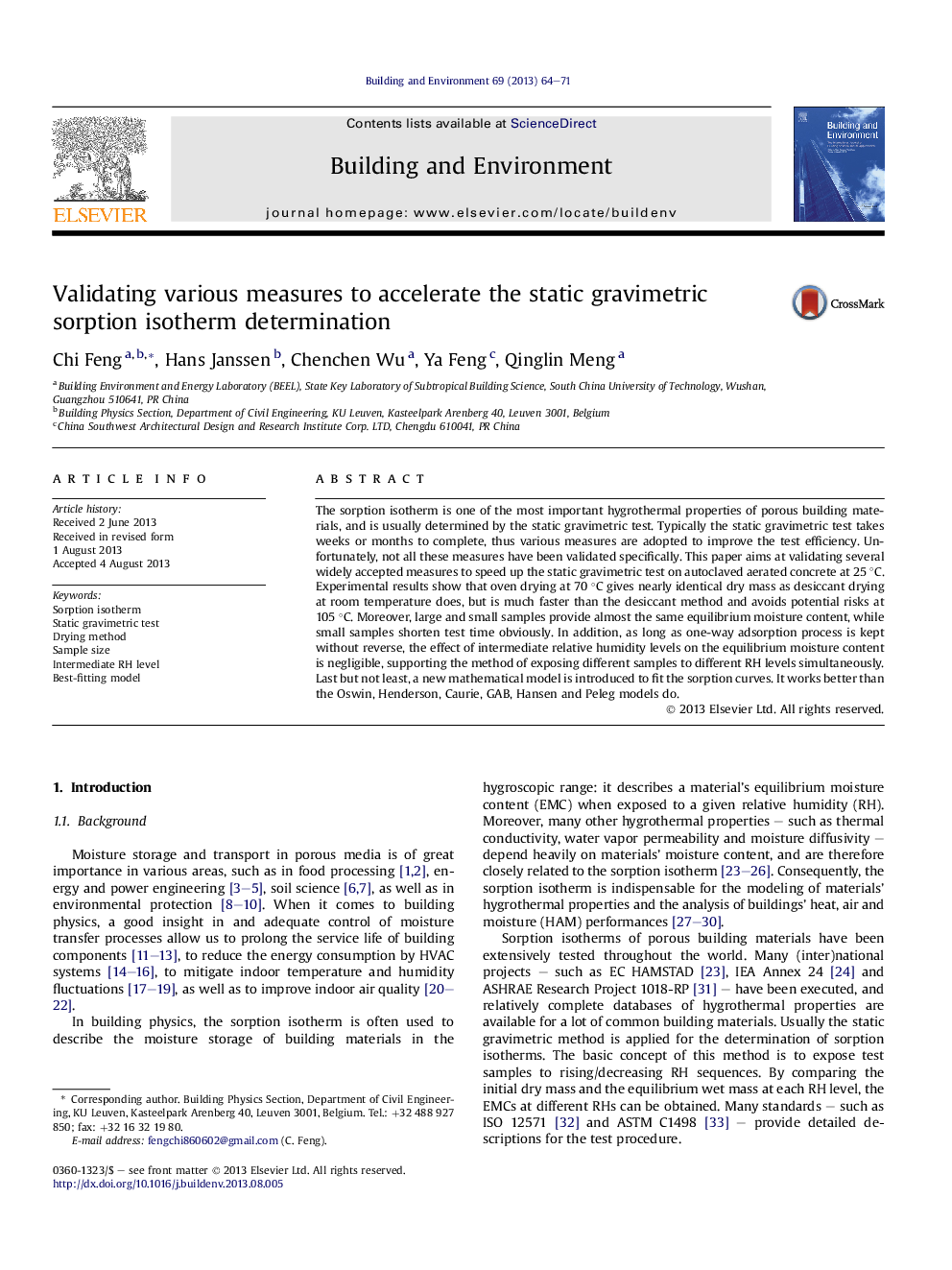| Article ID | Journal | Published Year | Pages | File Type |
|---|---|---|---|---|
| 248286 | Building and Environment | 2013 | 8 Pages |
•Measures to accelerate static gravimetric tests on sorption isotherms are examined.•Oven drying at 70 °C is the best drying method.•Small samples are better than large ones in efficiency, and are the same reliable.•Intermediate RH levels have no significant influence on one-way adsorption tests.•Our new model is the best in fitting sorption isotherms.
The sorption isotherm is one of the most important hygrothermal properties of porous building materials, and is usually determined by the static gravimetric test. Typically the static gravimetric test takes weeks or months to complete, thus various measures are adopted to improve the test efficiency. Unfortunately, not all these measures have been validated specifically. This paper aims at validating several widely accepted measures to speed up the static gravimetric test on autoclaved aerated concrete at 25 °C. Experimental results show that oven drying at 70 °C gives nearly identical dry mass as desiccant drying at room temperature does, but is much faster than the desiccant method and avoids potential risks at 105 °C. Moreover, large and small samples provide almost the same equilibrium moisture content, while small samples shorten test time obviously. In addition, as long as one-way adsorption process is kept without reverse, the effect of intermediate relative humidity levels on the equilibrium moisture content is negligible, supporting the method of exposing different samples to different RH levels simultaneously. Last but not least, a new mathematical model is introduced to fit the sorption curves. It works better than the Oswin, Henderson, Caurie, GAB, Hansen and Peleg models do.
